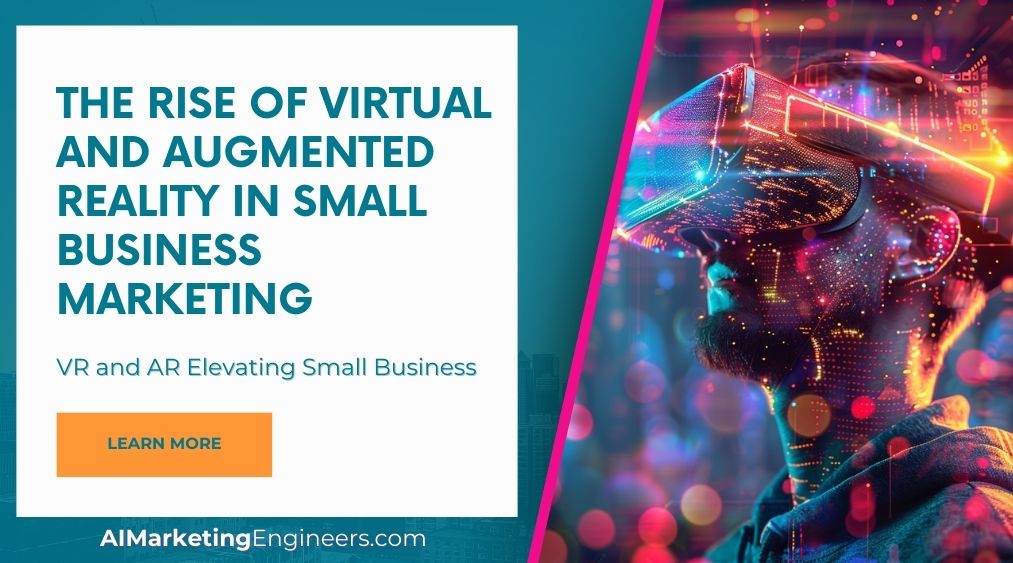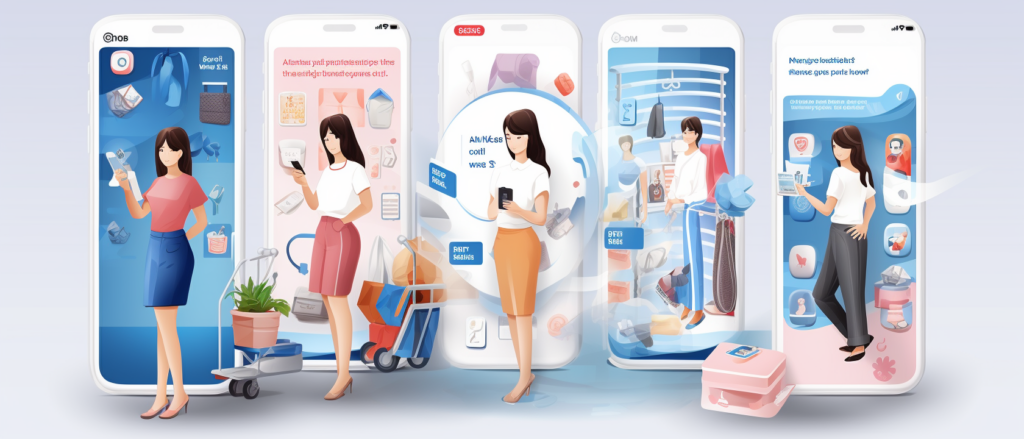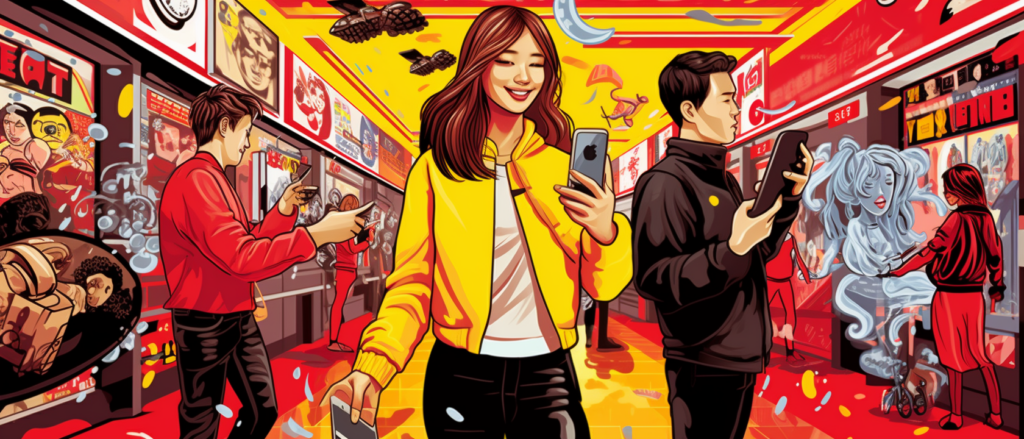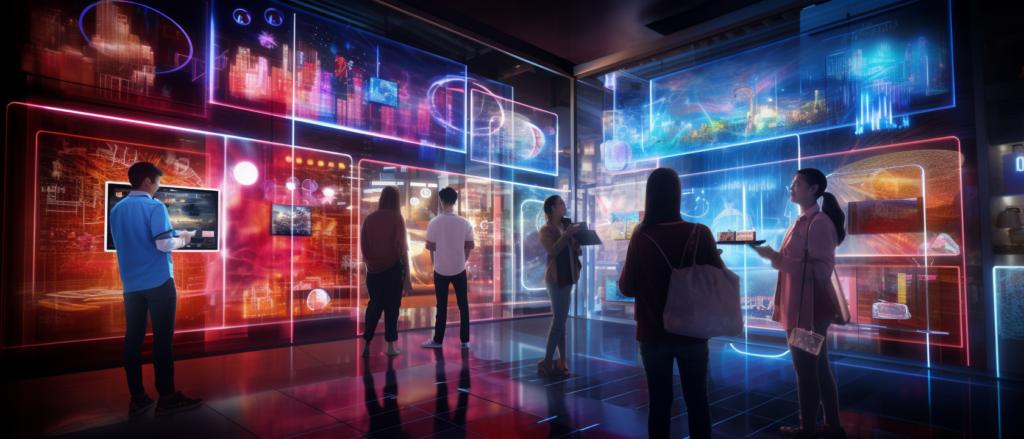Key Takeaways
✅ Enhanced Customer Experience and Engagement: Virtual and augmented reality transform customer experiences by offering immersive and interactive engagements. Like IKEA's AR app, small businesses can use these technologies to create virtual showrooms and gamified experiences, fostering higher customer satisfaction and loyalty.
✅ Cost-Effective and Accessible Solutions: VR and AR are becoming more affordable and accessible, allowing small businesses to integrate these technologies into their marketing strategies without breaking the bank. These advancements enable small businesses to compete with larger corporations in providing unique customer experiences.
✅ Expanding Opportunities for Digital Marketing and Advertising: VR and AR offer new avenues for small businesses to differentiate themselves in digital marketing and advertising, such as social media AR features for virtual try-ons. These technologies provide a competitive edge and boost sales and brand loyalty.
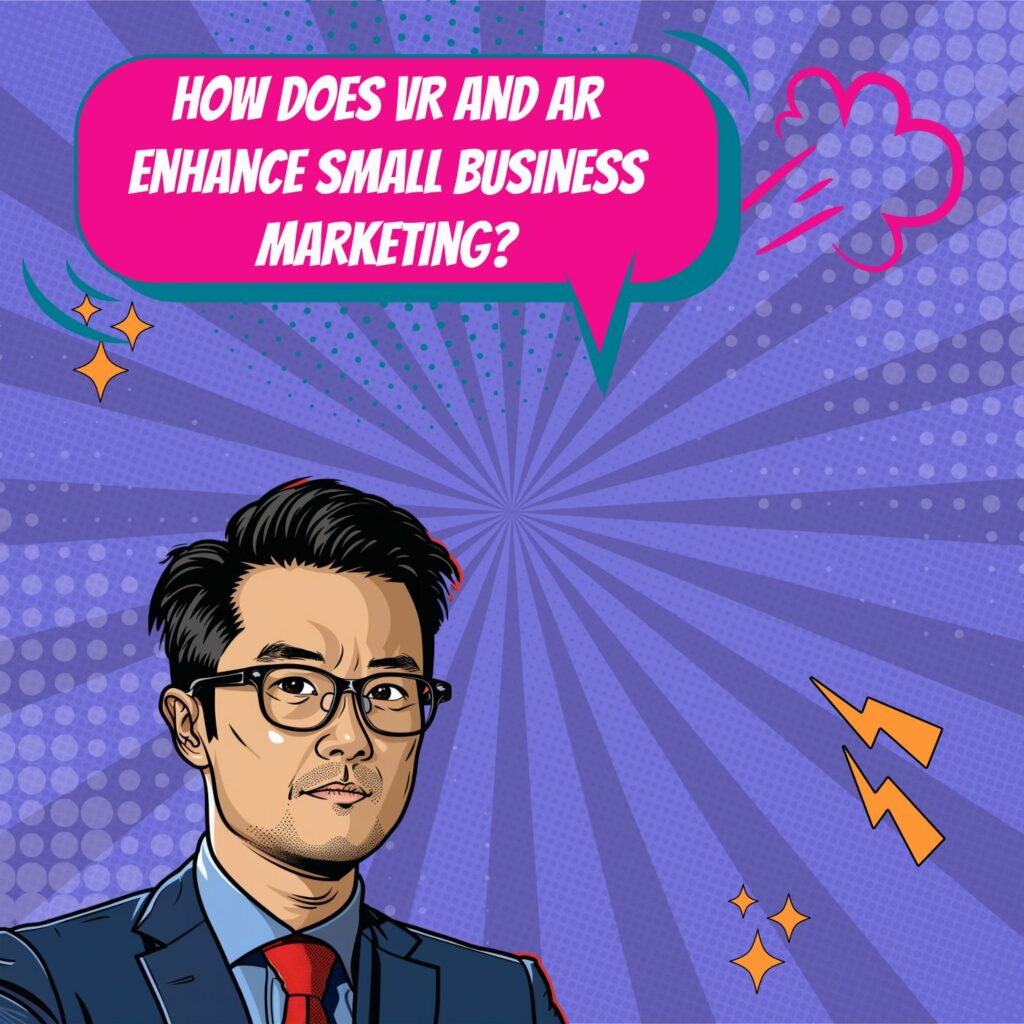
Introduction
Imagine giving your customers the ability to explore your products virtually, right from the comfort of their homes. It's not just a futuristic dream; it's happening now with the rise of virtual and augmented reality in small business marketing. These technologies are quickly becoming indispensable tools for engaging customers and enhancing brand experiences. Once thought to be expensive and hard to access, VR and AR technologies are now more affordable and practical for small businesses to adopt. Companies like IKEA are already using augmented reality to let customers visualize furniture in their own spaces, bridging the gap between online browsing and in-store shopping.
But there's more to explore—how do these technologies work, and what benefits and opportunities do they bring? This article dives deep into the transformative power of VR and AR, offering actionable insights and strategies to help your business take advantage of these cutting-edge marketing tools. With common misconceptions addressed and the latest trends revealed, get ready to revolutionize your marketing game and maximize your revenue.
Virtual and Augmented Reality in Small Business Marketing
Virtual and augmented reality (VR and AR) are revolutionizing the marketing scene, providing small businesses with innovative tools to engage customers like never before. The availability and affordability of these immersive technologies make them particularly appealing for small business marketing strategies. But what exactly are VR and AR, and how can they benefit small businesses? Understanding these technologies can open new avenues for creativity and customer engagement. Small businesses that adopt VR and AR can differentiate themselves in a crowded market. These tools also offer unique ways to demonstrate products and services, making marketing efforts more effective.
Understanding Virtual Reality (VR) and Augmented Reality (AR)
Virtual Reality (VR) places users in a completely digital environment, making them feel like they are physically present in a different world. Augmented Reality (AR), on the other hand, overlays digital elements onto the real world, enhancing the user's physical surroundings without disconnecting them from reality. These distinctions are crucial for small businesses to understand as they aim to incorporate these tools effectively. Knowing the differences between VR and AR helps businesses decide which technology suits their goals best. VR is ideal for creating immersive experiences, while AR is perfect for enhancing real-world interactions. Both technologies offer unique benefits that can be tailored to different marketing strategies.
Benefits of Using Virtual and Augmented Reality in Small Business Marketing
The benefits of VR and AR in marketing are significant. Increased engagement and interactivity are among the most notable advantages, as these technologies offer customers a compelling and immersive way to interact with products, fostering a stronger connection with the brand. Improved brand awareness is another benefit, as VR and AR capture attention more effectively than traditional media, introducing the brand to potential new audiences. Better customer insights are also provided, as these technologies collect data on how customers interact with products, improving future campaigns and customization. Additionally, they can expedite the buying process by allowing customers to virtually try products, reducing return rates and enhancing satisfaction.
Applications of AR and VR in Small Business Marketing
Several practical applications exist for small businesses looking to leverage VR and AR. Virtual try-ons allow customers to try clothes, accessories, or even makeup virtually, enhancing their shopping experience and reducing returns. Product visualization through digital models projected onto real-world environments can encourage purchases and reduce customer hesitation. Outdoor advertising can be transformed into interactive platforms, grabbing more attention from passersby and making traditional billboards more engaging. Virtual tours offer potential customers a first-hand experience of properties, travel destinations, and showrooms without being physically present. Product simulations provide detailed, engaging ways for customers to interact with complex products.
Challenges and Limitations of VR and AR Marketing
Despite the numerous benefits, several challenges exist. Higher costs associated with the development of specialized software and acquisition of equipment can be a significant barrier for small businesses. Technical issues are another concern, as the technology is still evolving and may encounter problems. Specialized skills are required to use VR and AR tools effectively, posing a learning curve for marketing teams. Additionally, there can be a gap in customer readiness, as not all consumers may be familiar with or comfortable using these technologies. It's essential for businesses to weigh these challenges against the potential benefits to determine if VR and AR are suitable for their marketing strategies.
Future Trends and Opportunities for VR and AR in Small Business Marketing
Looking ahead, several trends and opportunities are on the horizon. Cost-effective integration is becoming more accessible, with new platforms emerging that offer budget-friendly solutions, making VR and AR more attainable for small businesses. Increased exposure can be achieved as small businesses utilize these innovative technologies to stand out in a competitive market. Enhanced customer experience is a significant opportunity, as VR and AR tools create memorable and engaging experiences that can lead to increased customer loyalty and brand recognition. As these technologies continue to evolve, small businesses that adopt them early can position themselves as leaders in innovation and customer engagement.
AI Marketing Engineers Recommendation
Recommendation 1: Invest in Augmented Reality Product Previews to Boost Customer Engagement: Small businesses can significantly enhance customer engagement by integrating Augmented Reality (AR) Product Previews into their marketing strategy. According to a study by Shopify, AR interactions can lead to a 94% higher conversion rate compared to those without AR features. Implementing AR previews allows customers to virtually try products before buying, reducing return rates and increasing satisfaction. This technology is particularly effective in industries like home decor, fashion, and cosmetics, where visualizing the product in real-time can make a significant difference.
Recommendation 2: Utilize Virtual Reality Experiences for Immersive Storytelling and Brand Building: Incorporate Virtual Reality (VR) Experiences into your marketing efforts to captivate your audience through immersive storytelling. Current trends show that VR is expected to reach a market size of $20.9 billion by 2025, highlighting its growing importance. VR can create memorable experiences that foster a strong emotional connection with your brand. Small businesses can use VR to offer virtual tours, host events, or provide behind-the-scenes content, making their story more impactful and engaging for potential customers.
Recommendation 3: Leverage AR Advertising Campaigns through Social Media Platforms: Take advantage of AR Advertising Campaigns on popular social media platforms such as Instagram and Snapchat. These platforms are continuously evolving to include advanced AR tools and filters that businesses can use to reach their target audience more effectively. Research shows that AR ads have a 70% higher memory recall compared to non-AR ads, making them a powerful tool for small businesses looking to enhance brand recognition and recall. By creating interactive AR ads, businesses can engage users, encourage sharing, and drive higher interaction rates.
Relevant Links
- Revolutionize Your Business with AI Marketing
- Key Factors for Setting Impactful Campaign Goals
- Master Campaign Reach and Audience Size
- Analyzing User Behavior for Better Marketing Decisions
Conclusion
Virtual and augmented reality are truly revolutionizing the way small businesses approach marketing. By offering immersive experiences and novel ways to engage with customers, these technologies provide both increased engagement and improved brand awareness. VR and AR's ability to collect detailed customer insights further personalizes marketing campaigns, turning curious visitors into loyal buyers.
Despite challenges such as high costs and technical difficulties, the rapid advancements in these fields offer promising opportunities. Emerging, more cost-effective solutions are making VR and AR increasingly attainable for small businesses, allowing them to stand out in a crowded marketplace. As these technologies evolve, small businesses must weigh the benefits and seize the opportunities to stay competitive.
In the end, integrating VR and AR into marketing strategies is not just a trend but a strategic move. By doing so, small businesses can create memorable experiences that foster customer loyalty and drive growth. The future is bright for those willing to embrace these cutting-edge tools, shaping a new era of interactive marketing.
FAQs
Question 1: What is the difference between Virtual Reality (VR) and Augmented Reality (AR)?
Answer: Virtual Reality (VR) immerses users in a completely digital environment, usually via a VR headset, simulating an alternate reality. Augmented Reality (AR) overlays digital elements onto the real world, typically viewed through a smartphone or AR glasses, enhancing the user’s perception of the real world.
Question 2: Is Virtual Reality a Fad?
Answer: No. Despite some doubts, major companies like Facebook, Samsung, Google, and HTC have invested heavily in VR, indicating its long-term potential.
Question 3: How Big Is the VR and AR Market Going to Get?
Answer: Predicted to be a $150 billion industry by 2020. This includes both VR and AR, with an audience in the tens of millions, tuning in via console, headset, and mobile device.
Question 4: What Demographics Should My VR/AR Campaign Target?
Answer: Broad Demographics. VR and AR will be adopted by a large audience, including Baby Boomers, Generation Z, Millennials, and minorities, who have shown significant interest in these technologies.
Question 5: How Can Small Businesses Use VR and AR?
Answer: Interactive Product Visualization, Virtual Showrooms and Tours, Enhanced Customer Support, Gamification and Engagement. Implement 3D models and AR features on websites, create virtual showrooms or tours, use AR chatbots or virtual assistants, and create interactive VR/AR experiences to enhance customer engagement.
Question 6: How Do I Come Up with Good Subjects for VR/AR Campaigns?
Answer: Show Unique Experiences. Highlight unique aspects of your brand, such as amazing views, excitement, or energy, to maximize engagement with your audience.
Question 7: How Do I Find the Right Company to Produce VR/AR Content?
Answer: Research Production Studios. Look for studios that have worked on similar campaigns, review their process, and ensure they can deliver content that works on multiple platforms.
Question 8: What Kind of Turnaround Should I Expect for VR/AR Content Production?
Answer: Several Weeks. Production can take several weeks, depending on the complexity of the project, and may involve a premium for fast turnaround.
Question 9: Should I Wait Until More People Have VR Headsets?
Answer: No. While high-end headsets are expensive, cardboard headsets that work with smartphones are affordable and accessible, allowing you to bring the capability to your audience.
Academic References
- Poushneh, A., & Vasquez-Parraga, A. Z. (2017). Augmented Reality in Marketing: A Review and Research Agenda. Journal of Business Research, 81, 248-265. This paper systematically analyzes the use of augmented reality in marketing, highlighting its broad applications in both business and society.
- Dacko, S. G. (2017). VR in Customer-Centered Marketing: How Small and Medium-Sized Enterprises Can Benefit. International Journal of Research in Marketing, 34(4), 773-791. This study proposes guidelines for strategically deploying VR marketing in customer-centered businesses, focusing on small and medium-sized enterprises.
- Flavián, C., Ibáñez-Sánchez, S., & Orús, C. (2019). Persuasion Effects of Virtual and Augmented Reality: The Role of the Elaboration Likelihood Model. Journal of Business Research, 100, 547-560. This conceptual review presents a model for persuading consumer attitudes through virtual and augmented reality advertisements, using the social psychology theory of the elaboration likelihood model.
- Javornik, A. (2016). Augmented Reality Marketing: A Systematic Literature Review. Journal of Retailing and Consumer Services, 30, 252-261. This systematic literature review synthesizes existing research on augmented reality marketing, identifying gaps for future research and proposing an agenda for future academic efforts.
- Mongeon, P., & Paul-Hus, A. (2016). The Use of Virtual and Augmented Reality in Digital Marketing: Sustainability and Future Trends. Sustainability, 11(3), 872-889. This paper investigates the role of virtual and augmented reality in digital marketing, particularly in the context of sustainable business and future trends.
